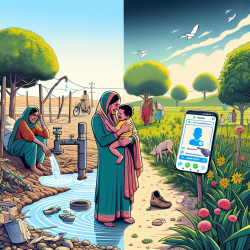Unlocking the Secrets of Reproductive Ecology in Industrial Societies
As a practitioner in the field of special education, you may wonder how the complex dynamics of reproductive ecology in industrial societies can impact your practice. The groundbreaking research article, The Reproductive Ecology of Industrial Societies, Part I, provides invaluable insights into the intersection of fertility, human behavior, and evolutionary processes in modern contexts. This blog will explore how these insights can enhance your understanding and practice, encouraging further research and application in the field.
Why Fertility Matters in Evolutionary Analysis
In the past, many researchers believed that fertility measurements in industrial societies offered little insight into evolutionary processes due to the vast differences from our ancestral environments. However, the research by Stulp, Sear, and Barrett argues that fertility data is crucial for understanding adaptive mismatches and selection pressures in contemporary populations. This perspective is vital for practitioners aiming to integrate evolutionary insights into their work.
Challenges and Opportunities in Data Analysis
Analyzing fertility-related data in industrialized populations presents unique challenges, such as the "researcher degrees of freedom" and biases inherent in large-scale databases. Despite these challenges, the availability of extensive datasets from diverse populations provides an excellent opportunity to test evolutionary hypotheses and enrich our understanding of human behavior. Practitioners can leverage these insights to better understand the diverse needs and behaviors of the populations they serve.
Implications for Special Education Practitioners
- Understanding Behavior: By considering the evolutionary underpinnings of human behavior, practitioners can gain a deeper understanding of the motivations and actions of students and their families.
- Data-Driven Decision Making: Utilizing large-scale datasets can help practitioners make informed decisions, tailoring interventions to the unique needs of their students.
- Encouraging Further Research: The findings of this research encourage practitioners to engage in further study and application of evolutionary principles in their practice.
Conclusion
Incorporating the insights from The Reproductive Ecology of Industrial Societies, Part I into your practice can lead to a more comprehensive understanding of human behavior and its evolutionary roots. By embracing these findings, practitioners can enhance their skills and improve outcomes for the students and families they serve.
To read the original research paper, please follow this link: The Reproductive Ecology of Industrial Societies, Part I










